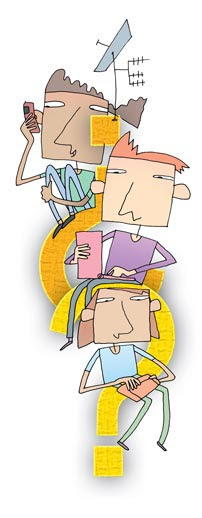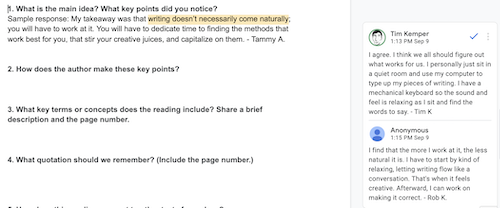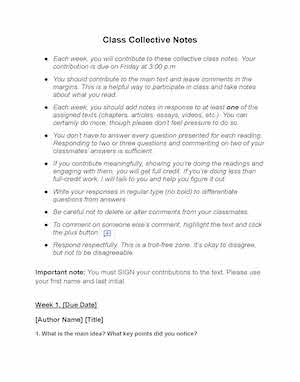
In your dream classroom, what does a good discussion look like? For the longest time, my dream resembled a scene from Dead Poets Society. I pictured myself facilitating lively conversations about literature, with energized students speaking up, sharing insights, talking through difficult ideas, and working toward new understandings.
In reality, the reading discussions in my English classes were much more muted. Even the best ones were dominated by a few outgoing students and one loud teacher.
I knew I needed to make some changes, beginning with how I perceived a “good” discussion.
I assumed—incorrectly—that a good discussion must be verbal. By doing so, I excluded quiet students and others who wanted to contribute but needed more time to process new information.
With those students in mind, I began offering more opportunities to engage with reading outside of whole-class discussions, including low-stakes writing such as freewriting, journaling, and chat app conversations.
Those opportunities helped, but I saw the most engagement by introducing collective notes.
What Are Collective Notes?
Collective notes are a virtual space for students to respond to course texts and each other. Each week in a shared Google document, you can post a set of discussion questions about assigned readings. Students pick and choose questions to answer on the main document and post comments to each other in the margins.
This live document grows as the year progresses, becoming a crowdsourced library of notes, conversations, and reflections on books, essays, videos, articles, and other class materials.

The notes work for a number reasons:
- They offer choice. Students can choose what questions to respond to.
- They give students time and flexibility. Notes are due at the end of the week. Students can access the document and contribute whenever they choose. All they need is a device connected to the internet.
- They offer a low-stakes environment to engage. Students are required to respond in a few different ways, but they get full credit simply for participating.
- They build accountability. Students must read the materials to meaningfully contribute to the conversation.
- They build community. Students comment on each other’s notes. They also respond to other comments, creating wonderful side conversations.
- They create an archive of knowledge. Students can return to the document when planning and drafting their writing.
Featured Download: Collective Notes Template
Try it out! Use this Class Collective Notes template with instructions, sample questions, and sample notes.

Teaching Support
Consider this support when using collective notes.
Level
6–12
Learning Objectives
By contributing to collective notes, students will . . .
- Respond to and reflect on reading.
- Pick out the main ideas from texts.
- Participate in discussions about course materials and other texts.
- Consider the points of view of classmates and peers.
- Write routinely for a range of tasks and purposes.
Teaching Tips
- Set some ground rules about respectful commenting.
- As the year progresses, your collective notes may get quite long. Use the outline icon on the left side of the document to navigate rather than scrolling. Google automatically inserts the text of large headings in the outline.
- Always place the current week’s questions at the top of the document.
- Use specific ideas from the notes as conversation points for other class discussions or activities.
- Occasionally add your own comments to the notes, but generally leave this space for the students to write and interact.
- Don’t feel the need to closely read or assess every one of your students' notes and comments.
- Make your grading low-stakes. (I simply mark weekly entries as complete/incomplete.)
- Encourage students to return to the document when completing related projects or preparing for comprehension quizzes.